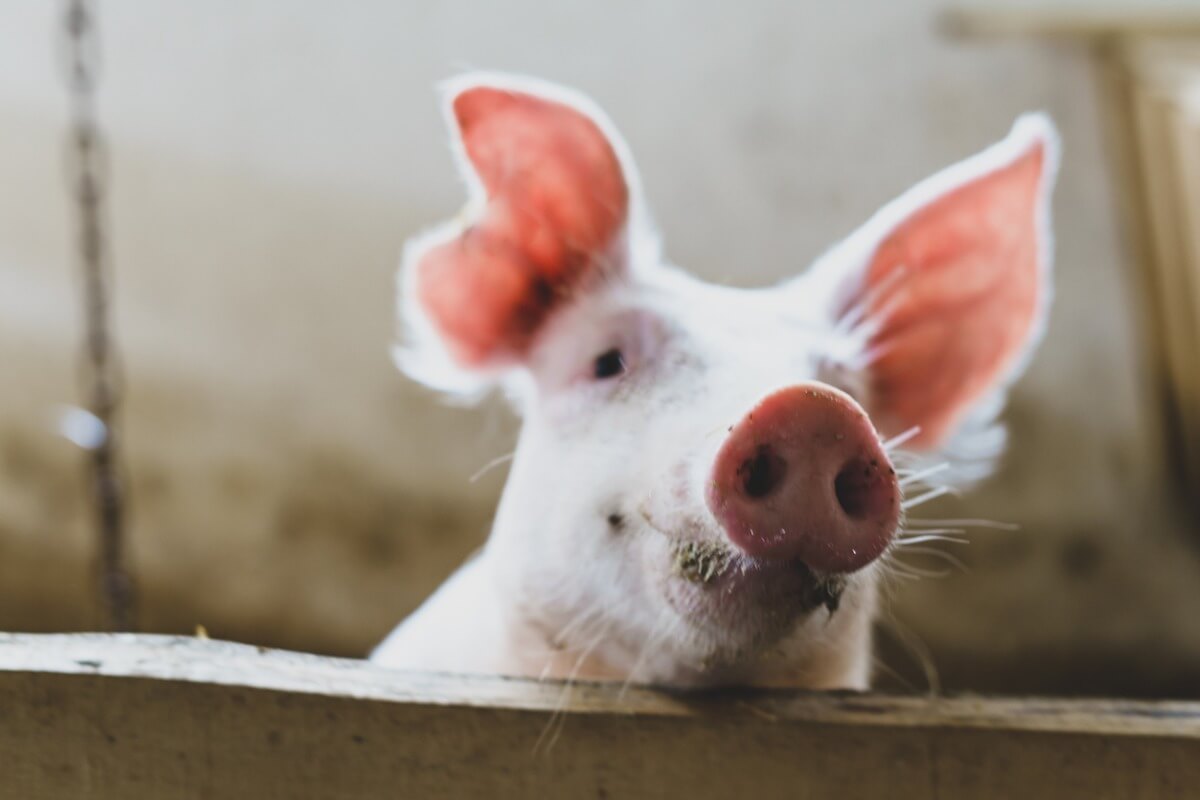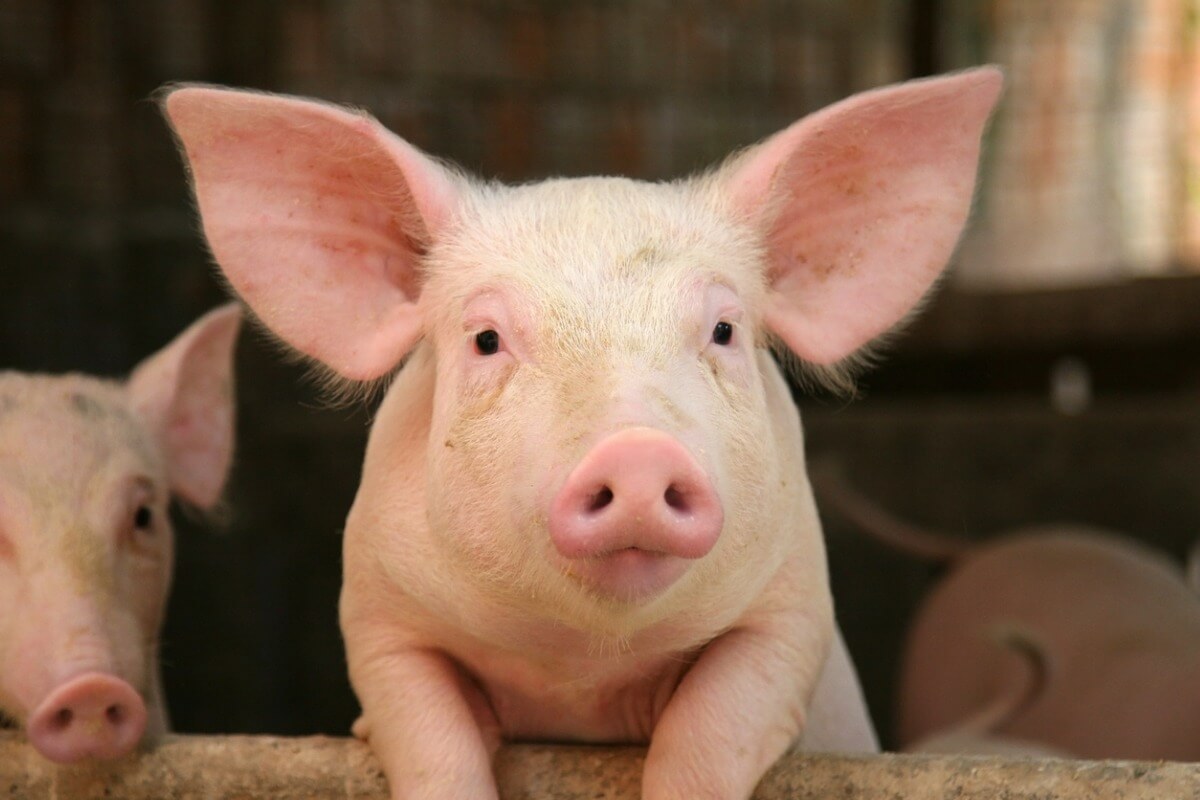5 Curiosities About Pig Grunts


Written and verified by the biologist Georgelin Espinoza Medina
One of the ways in which animals communicate is by means of the sounds they emit. These are variable among different species. Although we often know to distinguish between certain barks and meows, and other calls, it’s impossible to know the meanings of all animal vocalization. And what about pigs? Well, research has been able to start to decode domestic pig grunts. Find out all about them here!
Pigs (Sus Scrofa Domestica) are very social and communicative animals. Several experiments conducted in recent years have demonstrated interesting aspects of their vocal communication. Here we’ll bring you all the information about the grunts and sounds of these fascinating animals.
Curiosities of pig grunts
We’ve all heard the typical “oink, oink” sounds that pigs make and we may think that they’re not too relevant. However, their grunts actually reveal more than you’d think. Here are five aspects of pig grunts.
1. They reflect their personality

Beyond a simple random vocalization, pigs’ grunts are a direct reflection of their personality. Thus, the intensity varies according to whether individuals are more proactive or not. This was demonstrated by a study conducted with 72 young animals at Lincoln and Queen’s University (UK).
Pigs were placed in different environments to assess response. The more proactive ones showed higher rates in the rhythm of their vocalizations to new events. Thus, the relationship between their sounds and personality is established.
There’s evidence that in bird specimens, such as the Australian zebra finch, females choose mates according to personality. This aspect may be relevant in such relationships and vocalizations serve as a basis for this.
2. Pig grunts are variable
Even when we think that a simple “oink” defines the noise of these cute mammals, this isn’t the case. Pigs emit between 25 and 30 sounds, such as grunts and squeals, with varying frequencies and intensities that don’ exceed 115 decibels. The most impressive thing is that each one has its meaning. Thus, for example, high-frequency squeaks are related to fear.
3. They convey important information
As we can see, apart from their variability, the different types of vocalizations have a reason. They offer a picture of the emotional, physiological, and motivational state of the animal. In short, a complete picture of what’s going on in their lives.
Soft grunts, for example, are common while eating, and are thought to enable them to call other group members, and, in other words, they enable location. High-frequency squeals are related to distress situations, so they help to alert them.
The most interesting aspect of pig grunts is the information they provide, especially since they allow a better understanding of emotions in this group of animals.
4. Pig grunts are different according to sex and situations
During the research, domestic pigs were divided into groups and placed in different environments. One in which they had more space and comfort, and another smaller area of lower quality. In each case, their vocalizations varied. In particular, males in poor environments were affected and their calls were reduced, suggesting greater sensitivity when situations are unfavorable.
5. They allow to measure animal welfare

All the information collected and observations made help us to understand pig behavior better. In addition, it makes it possible to find out an animal’s welfare status, data that can be very useful for producers.
Another study on these social mammals published this year in the magazine Scientific Report, in which 7414 calls from 411 pigs of different ages in different contexts were analyzed, revealed this informative trend.
The idea was to obtain a characterization of the sounds in order to create a database. In this way, real-time assessment tool of animal welfare on farms can be carried out.
The results obtained made it possible to classify the calls into positive and negative contexts for pigs. When these mammals are in favorable or neutral situations (gathering, suckling, running, feeding), their sounds are characterized by low frequency, especially grunts. Otherwise, in adverse circumstances (fighting, weaning, isolation), the vocalizations are screams or shouts, with a high frequency.
Emotions can influence and modify the structure of the sounds, so knowing in detail the vocalizations shows a picture of how the animals are.
As we can see, the communication of social animals provides an important repertoire of data, including real-time emotions. For sure, with this information, the squeaks and grunts of pigs the next time you come across some, and , and try to decipher what this cute little animal means when it tries to express itself.
All cited sources were thoroughly reviewed by our team to ensure their quality, reliability, currency, and validity. The bibliography of this article was considered reliable and of academic or scientific accuracy.
- Briefer, E., Sypherd, C.., Linhart, P., et al. (2022). Classification of pig calls produced from birth to slaughter according to their emotional valence and context of production. Scientific Report, 12, 3409. https://doi.org/10.1038/s41598-022-07174-8
- Friel, M., Kunc, H., Griffin, K., Asher, L., & Collins, L. (2016). Acoustic signaling reflects personality in a social mammal. Royal. Society Open Science, 3, 160178. http://dx.doi.org/10.1098/rsos.160178
- Paredes-Ramos, P., Espinosa-Palencia, M., Espejo-Beristaín, G., Ahuja-Aguirre, C., Hernández-Cruz, B., & Coria-Avila, A. (2020). Cognición en cerdos. eNeurobiología, 11(26), 250520.
- Schuett, W., Godin, J., & Dall, S. (2011). Do female zebra finches, Taeniopygia guttata, choose their mates based on their ‘personality’? Ethology, 117, 908–917.
This text is provided for informational purposes only and does not replace consultation with a professional. If in doubt, consult your specialist.